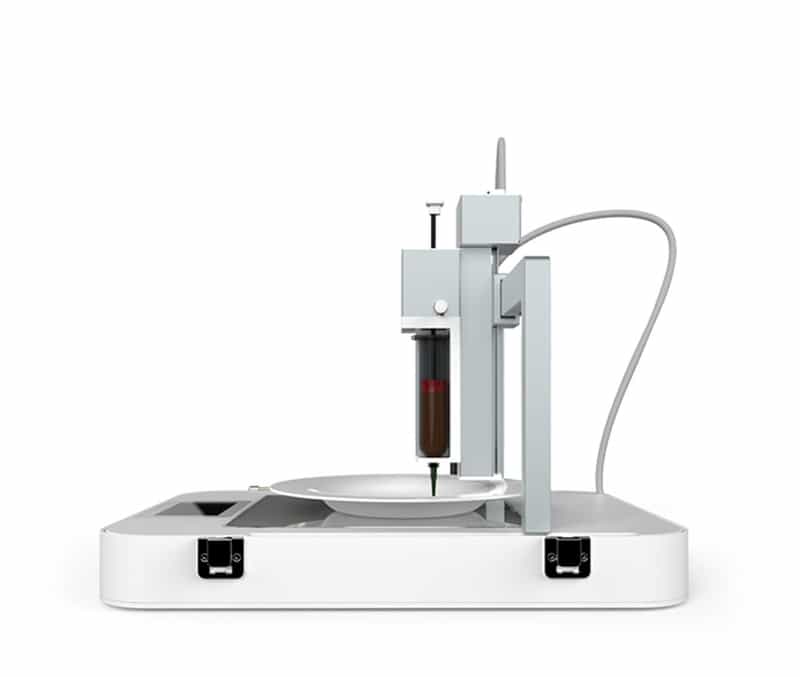
There are a scant few “food” 3D printers available, and one of them is the Byflow Focus 3D food printer.
The Focus uses the standard syringe-style approach, in which an amount of food in paste form is slowly extruded in a pattern on the build plate.
The food must be prepared in advance to ensure it is sufficiently non-viscous to pass through the syringe mechanism with adequate flow. If not, extrusions might have intermittent quality issues.
Byflow provides several recipes for use in their syringes, but once you’ve seen the general approach it is reasonable to attempt your own design (or “recipe”).
There are two approaches to using the Byflow Focus 3D food printer: you could extruder a food material that is ready to eat upon extrusion, like soft heated chocolate that solidifies when extruded. Or you could 3D print a cookable material like dough or minced meat, which can be heated to cooking temperatures after printing. The advantage here is that the material would be in a unique shape.
It’s also possible to combine approaches: dough can be 3D printed in unique forms that can then be used for “construction” of more interesting 3D shapes, for example. Edible containers can be produced to contain non-3D printable food material as well.
But one issue present with the Byflow Focus and indeed almost all food printers is the rather poor engineering qualities present in typical food materials. Imagine, for example, a minced meat being 3D printed. How tall an object could you 3D print? It turns out it is not particularly tall because the strength of minced meat is poor and taller structures will collapse under their own weight if sufficienctly tall. Well before that stage they may deform or slump, limiting you to thinner designs. Other materials like chocolate are even worse for height.
Byflow offers the Focus in two configurations. The first is the basic food printer, priced at €2,750 (USD$3,240) and the second is a reconfigurable unit where you can swap out the food syringe mechanism and replace it with a standard 3D print head and extruder for 3D printing in PLA plastic. The second model is priced at €2,990 (USD$3,530).
I’d like to say you can 3D print the dishes AND the food in one device, but I strongly recommend against 3D printing any food-contactable parts. Even if the machine and material are foodsafe, the layered print will most certainly be uncleanable and accumulate nasties in layer gaps.
The pricing seems a bit high for me, as this price range is similar to that of very powerful professional desktop 3D printers capable of 3D printing a wide variety of materials – albeit not food.
While the Byflow Focus is certainly a very attractive device that would aesthetically fit in any kitchen, it may be a more economical approach to acquire a standard desktop 3D printer and upgrade it with a paste extruder, as is available from Structur3d.
Via Byflow

